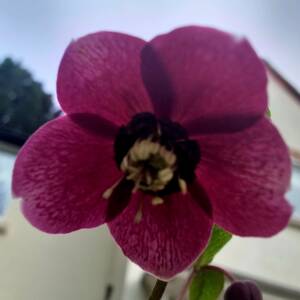Aston Hall and Church
We went off on the Sculpture Search again this morning, this time to the Aston area of the City, revisiting some of my old haunts from when I worked as a steward at Villa Park. We had an interesting morning and found most of the sculptures we were looking for.
"Using a design by John Thorpe, construction commenced in April 1618 by Sir Thomas Holte, who finally moved into the hall in 1631. It was completed in April 1635. It is now Grade I listed.[1] The house sits in a large park, part of which became Villa Park, the home ground of the Aston Villa football club.[2]
The Long Gallery
The house was severely damaged after an attack by Parliamentary troops in 1643; some of the damage is still evident. There is a hole in the staircase where a cannonball went through a window and an open door, and into the banister. The house remained in the Holte family until 1817 when it was sold and leased by James Watt Jr., son of industrial pioneer James Watt. The house was then purchased in 1858 by a private company (the Aston Hall and Park Company Ltd) for use as a public park and museum. After financial difficulties it was then bought by the Birmingham Corporation in 1864, becoming the first historic country house to pass into municipal ownership.
It was also visited by Washington Irving, who wrote about it as Bracebridge Hall, taking the name from Abraham Bracebridge, husband of the last member of the Holte family to live there. Irving's The Sketch Book stories depicted harmonious warm-hearted English Christmas festivities he experienced while staying in Aston Hall, that had largely been abandoned.[3] An Aston Hall Christmas Eve custom the owners afforded the servants of the house appeared in The Gentleman's Magazine in 1795, which wrote, "the servants have full liberty to drink, dance, sing, and go to bed when they please."[4]
For a few years from 1878 Birmingham's collections of art and the Museum of Arms were moved to Aston Hall after a fire damaged the municipal Public Library and Birmingham and Midland Institute which shared a building in Paradise Street, until the building of the current Art Gallery in the Council House complex.
Aston Hall gardens
In the 1920s, the Birmingham Corporation was having financial troubles and had to choose between saving Aston Hall and the nearby Perry Hall. Aston Hall was saved, and in 1927 the Birmingham Civic Society designed formal gardens which were implemented by the city with a workforce recruited from the unemployed and paid for by government grants. However, the scheme included fountains, terracing and stone urns and a statue of Pan, by William Bloye, which the Civic Society paid for itself. In 1934 the finished work was presented to the City Parks Committee and unveiled by the Vice President of The Birmingham Civic Society, Sir Gilbert Barling, Bart, CB, CBE. As of January 2011, Birmingham City Council are working on the restoration of the statue, whose head is missing. They have appealed for old photographs, to assist in its reconstruction."

Comments
Sign in or get an account to comment.


